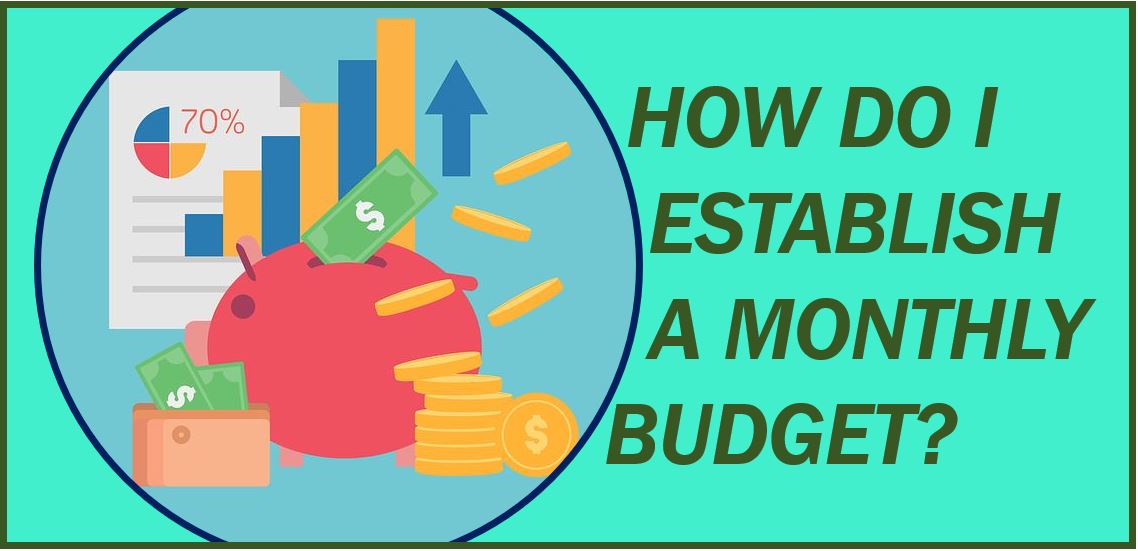A monthly budget is a powerful tool for helping you manage your financial situation. You can use it to determine if your spending habits need limiting or whether you need to rethink your expenses.
 Having an exact idea about how much you’re spending and earning will add a level of accountability to your actions. Knowing that you don’t earn enough can stop you from making a foolish purchasing decision.
Having an exact idea about how much you’re spending and earning will add a level of accountability to your actions. Knowing that you don’t earn enough can stop you from making a foolish purchasing decision.
Before you can use one, you’ll need to learn how to prepare a budget. This isn’t a simple task and requires you to think hard about how you earn and spend your money.
We’ll give you some excellent pointers below to get you started.
Calculate Total Income
You should begin by determining how much income you make.
This is important because it speaks to how much flexibility you have. The greater your income level, the more you can afford to spend.
Your income includes anything you receive as a paycheck and money on the side. If you only work a job, then this only includes your hourly rate or salary.
Alternatively, if you run side gigs like freelancing, personal sales, or anything else that generates money, then this should also be factored in.
It’s fairly easy to extrapolate your earnings when you know your hourly rate or salary. Push this figure out to an average month’s income. If you need to estimate, be conservative and guess under.
Your income is the most important figure here, so nailing it down will make the rest of the process smooth sailing.
Evaluate Your Priorities
Once you know your total income, you need to evaluate what your priorities are.
In other words, you should figure out what you must pay each month. This applies to costs that you need to pay every month just to survive.
For you, this might include things like rent, utilities, a phone bill, car insurance, gas, credit card payments, and groceries. You should split this up into two categories; fixed and variable expenses.
Costs that are the same every month, like rent, car insurance, and a phone bill are fixed. Anything else that varies between months like gas and groceries can be difficult to pin down.
Because of this, you should estimate what the cost will be based on the higher end of the spectrum. If you pay between $50-$75 each month, put it down as $75 to be safe.
Think about everything that you pay for. Don’t be afraid to look at your bank statement and see where the money is going if you can’t remember.
Determine Unnecessary Spending
After recording your necessary costs, it’s time to look at excess spending.
This is anything that you don’t need to buy every month. For example, you need groceries to eat, but you don’t need to order delivery three times a week.
Anything that isn’t a necessity should not be directly factored into your budget. You can leave a figure for excess spending once you determine how much is left over after deducting your necessary expenses from your total income.
This is an important step because this is where your wiggle room lies. It is often difficult to change your income or mandatory expenses, but excess spending can be changed.
Leave Room for Savings
Once you evaluate your income, required costs, and free-spending, you should see how much is left over.
If you aren’t spending anything unnecessarily, then you’ll probably have money left over for saving. Anything you buy that you don’t need will directly cut into these savings.
Say you have $100 leftover after all bills are paid. This might not seem like much, but it’s $1200 in a year.
Should you choose to eat out a few times and buy some clothes each month, then you’ll wind up with nothing!
This comes down to what matters most to you. Do you want to plan and be ready for the future or would you rather enjoy the present and splurge a little bit?
There’s also the idea of increasing your income to accommodate your spending habits. In theory, this is effective, but it might encourage you to spend even more.
Make a point of shaping your spending around what your budget can handle. Try to keep some leftover for savings so that you can handle an emergency should it happen.
More tips…

Closing Thoughts
A budget is a fantastic way of figuring out if your spending is feasible. It takes a look at your cash flow and determines where it all goes.
From this, you can see if you’re saving or losing money every month. This can help you make smarter decisions and refrain from mindless shopping.
A few helpful tips include determining your total income, evaluating your priority expenses, looking at unnecessary expenditures, and leaving room for savings.
A budget won’t force you to change your habits, but it can help remind you to follow your plan! Make one today to do your future self a huge favor!
Interesting related article: “What is a Budget?”

